Prophylactic Treatment
On-Demand Treatment
Gene Therapy
Desmopressin
Factor Replacement Therapy
Hemophilia A
Hemophilia B
Von Willebrand Disease
Intravenous
Subcutaneous
Oral
Hospitals
Specialty Clinics
Home Care Settings
North America
Europe
South America
Asia Pacific
Middle East and Africa
North America Outlook (USD Billion, 2019-2035)
North America Hemophilia Treatment Market by Treatment Type
Prophylactic Treatment
On-Demand Treatment
Gene Therapy
Desmopressin
Factor Replacement Therapy
North America Hemophilia Treatment Market by Hemophilia Type
Hemophilia A
Hemophilia B
Von Willebrand Disease
North America Hemophilia Treatment Market by Administration Route Type
Intravenous
Subcutaneous
Oral
North America Hemophilia Treatment Market by End User Type
Hospitals
Specialty Clinics
Home Care Settings
North America Hemophilia Treatment Market by Regional Type
US
Canada
US Outlook (USD Billion, 2019-2035)
US Hemophilia Treatment Market by Treatment Type
Prophylactic Treatment
On-Demand Treatment
Gene Therapy
Desmopressin
Factor Replacement Therapy
US Hemophilia Treatment Market by Hemophilia Type
Hemophilia A
Hemophilia B
Von Willebrand Disease
US Hemophilia Treatment Market by Administration Route Type
Intravenous
Subcutaneous
Oral
US Hemophilia Treatment Market by End User Type
Hospitals
Specialty Clinics
Home Care Settings
CANADA Outlook (USD Billion, 2019-2035)
CANADA Hemophilia Treatment Market by Treatment Type
Prophylactic Treatment
On-Demand Treatment
Gene Therapy
Desmopressin
Factor Replacement Therapy
CANADA Hemophilia Treatment Market by Hemophilia Type
Hemophilia A
Hemophilia B
Von Willebrand Disease
CANADA Hemophilia Treatment Market by Administration Route Type
Intravenous
Subcutaneous
Oral
CANADA Hemophilia Treatment Market by End User Type
Hospitals
Specialty Clinics
Home Care Settings
Europe Outlook (USD Billion, 2019-2035)
Europe Hemophilia Treatment Market by Treatment Type
Prophylactic Treatment
On-Demand Treatment
Gene Therapy
Desmopressin
Factor Replacement Therapy
Europe Hemophilia Treatment Market by Hemophilia Type
Hemophilia A
Hemophilia B
Von Willebrand Disease
Europe Hemophilia Treatment Market by Administration Route Type
Intravenous
Subcutaneous
Oral
Europe Hemophilia Treatment Market by End User Type
Hospitals
Specialty Clinics
Home Care Settings
Europe Hemophilia Treatment Market by Regional Type
Germany
UK
France
Russia
Italy
Spain
Rest of Europe
GERMANY Outlook (USD Billion, 2019-2035)
GERMANY Hemophilia Treatment Market by Treatment Type
Prophylactic Treatment
On-Demand Treatment
Gene Therapy
Desmopressin
Factor Replacement Therapy
GERMANY Hemophilia Treatment Market by Hemophilia Type
Hemophilia A
Hemophilia B
Von Willebrand Disease
GERMANY Hemophilia Treatment Market by Administration Route Type
Intravenous
Subcutaneous
Oral
GERMANY Hemophilia Treatment Market by End User Type
Hospitals
Specialty Clinics
Home Care Settings
UK Outlook (USD Billion, 2019-2035)
UK Hemophilia Treatment Market by Treatment Type
Prophylactic Treatment
On-Demand Treatment
Gene Therapy
Desmopressin
Factor Replacement Therapy
UK Hemophilia Treatment Market by Hemophilia Type
Hemophilia A
Hemophilia B
Von Willebrand Disease
UK Hemophilia Treatment Market by Administration Route Type
Intravenous
Subcutaneous
Oral
UK Hemophilia Treatment Market by End User Type
Hospitals
Specialty Clinics
Home Care Settings
FRANCE Outlook (USD Billion, 2019-2035)
FRANCE Hemophilia Treatment Market by Treatment Type
Prophylactic Treatment
On-Demand Treatment
Gene Therapy
Desmopressin
Factor Replacement Therapy
FRANCE Hemophilia Treatment Market by Hemophilia Type
Hemophilia A
Hemophilia B
Von Willebrand Disease
FRANCE Hemophilia Treatment Market by Administration Route Type
Intravenous
Subcutaneous
Oral
FRANCE Hemophilia Treatment Market by End User Type
Hospitals
Specialty Clinics
Home Care Settings
RUSSIA Outlook (USD Billion, 2019-2035)
RUSSIA Hemophilia Treatment Market by Treatment Type
Prophylactic Treatment
On-Demand Treatment
Gene Therapy
Desmopressin
Factor Replacement Therapy
RUSSIA Hemophilia Treatment Market by Hemophilia Type
Hemophilia A
Hemophilia B
Von Willebrand Disease
RUSSIA Hemophilia Treatment Market by Administration Route Type
Intravenous
Subcutaneous
Oral
RUSSIA Hemophilia Treatment Market by End User Type
Hospitals
Specialty Clinics
Home Care Settings
ITALY Outlook (USD Billion, 2019-2035)
ITALY Hemophilia Treatment Market by Treatment Type
Prophylactic Treatment
On-Demand Treatment
Gene Therapy
Desmopressin
Factor Replacement Therapy
ITALY Hemophilia Treatment Market by Hemophilia Type
Hemophilia A
Hemophilia B
Von Willebrand Disease
ITALY Hemophilia Treatment Market by Administration Route Type
Intravenous
Subcutaneous
Oral
ITALY Hemophilia Treatment Market by End User Type
Hospitals
Specialty Clinics
Home Care Settings
SPAIN Outlook (USD Billion, 2019-2035)
SPAIN Hemophilia Treatment Market by Treatment Type
Prophylactic Treatment
On-Demand Treatment
Gene Therapy
Desmopressin
Factor Replacement Therapy
SPAIN Hemophilia Treatment Market by Hemophilia Type
Hemophilia A
Hemophilia B
Von Willebrand Disease
SPAIN Hemophilia Treatment Market by Administration Route Type
Intravenous
Subcutaneous
Oral
SPAIN Hemophilia Treatment Market by End User Type
Hospitals
Specialty Clinics
Home Care Settings
REST OF EUROPE Outlook (USD Billion, 2019-2035)
REST OF EUROPE Hemophilia Treatment Market by Treatment Type
Prophylactic Treatment
On-Demand Treatment
Gene Therapy
Desmopressin
Factor Replacement Therapy
REST OF EUROPE Hemophilia Treatment Market by Hemophilia Type
Hemophilia A
Hemophilia B
Von Willebrand Disease
REST OF EUROPE Hemophilia Treatment Market by Administration Route Type
Intravenous
Subcutaneous
Oral
REST OF EUROPE Hemophilia Treatment Market by End User Type
Hospitals
Specialty Clinics
Home Care Settings
APAC Outlook (USD Billion, 2019-2035)
APAC Hemophilia Treatment Market by Treatment Type
Prophylactic Treatment
On-Demand Treatment
Gene Therapy
Desmopressin
Factor Replacement Therapy
APAC Hemophilia Treatment Market by Hemophilia Type
Hemophilia A
Hemophilia B
Von Willebrand Disease
APAC Hemophilia Treatment Market by Administration Route Type
Intravenous
Subcutaneous
Oral
APAC Hemophilia Treatment Market by End User Type
Hospitals
Specialty Clinics
Home Care Settings
APAC Hemophilia Treatment Market by Regional Type
China
India
Japan
South Korea
Malaysia
Thailand
Indonesia
Rest of APAC
CHINA Outlook (USD Billion, 2019-2035)
CHINA Hemophilia Treatment Market by Treatment Type
Prophylactic Treatment
On-Demand Treatment
Gene Therapy
Desmopressin
Factor Replacement Therapy
CHINA Hemophilia Treatment Market by Hemophilia Type
Hemophilia A
Hemophilia B
Von Willebrand Disease
CHINA Hemophilia Treatment Market by Administration Route Type
Intravenous
Subcutaneous
Oral
CHINA Hemophilia Treatment Market by End User Type
Hospitals
Specialty Clinics
Home Care Settings
INDIA Outlook (USD Billion, 2019-2035)
INDIA Hemophilia Treatment Market by Treatment Type
Prophylactic Treatment
On-Demand Treatment
Gene Therapy
Desmopressin
Factor Replacement Therapy
INDIA Hemophilia Treatment Market by Hemophilia Type
Hemophilia A
Hemophilia B
Von Willebrand Disease
INDIA Hemophilia Treatment Market by Administration Route Type
Intravenous
Subcutaneous
Oral
INDIA Hemophilia Treatment Market by End User Type
Hospitals
Specialty Clinics
Home Care Settings
JAPAN Outlook (USD Billion, 2019-2035)
JAPAN Hemophilia Treatment Market by Treatment Type
Prophylactic Treatment
On-Demand Treatment
Gene Therapy
Desmopressin
Factor Replacement Therapy
JAPAN Hemophilia Treatment Market by Hemophilia Type
Hemophilia A
Hemophilia B
Von Willebrand Disease
JAPAN Hemophilia Treatment Market by Administration Route Type
Intravenous
Subcutaneous
Oral
JAPAN Hemophilia Treatment Market by End User Type
Hospitals
Specialty Clinics
Home Care Settings
SOUTH KOREA Outlook (USD Billion, 2019-2035)
SOUTH KOREA Hemophilia Treatment Market by Treatment Type
Prophylactic Treatment
On-Demand Treatment
Gene Therapy
Desmopressin
Factor Replacement Therapy
SOUTH KOREA Hemophilia Treatment Market by Hemophilia Type
Hemophilia A
Hemophilia B
Von Willebrand Disease
SOUTH KOREA Hemophilia Treatment Market by Administration Route Type
Intravenous
Subcutaneous
Oral
SOUTH KOREA Hemophilia Treatment Market by End User Type
Hospitals
Specialty Clinics
Home Care Settings
MALAYSIA Outlook (USD Billion, 2019-2035)
MALAYSIA Hemophilia Treatment Market by Treatment Type
Prophylactic Treatment
On-Demand Treatment
Gene Therapy
Desmopressin
Factor Replacement Therapy
MALAYSIA Hemophilia Treatment Market by Hemophilia Type
Hemophilia A
Hemophilia B
Von Willebrand Disease
MALAYSIA Hemophilia Treatment Market by Administration Route Type
Intravenous
Subcutaneous
Oral
MALAYSIA Hemophilia Treatment Market by End User Type
Hospitals
Specialty Clinics
Home Care Settings
THAILAND Outlook (USD Billion, 2019-2035)
THAILAND Hemophilia Treatment Market by Treatment Type
Prophylactic Treatment
On-Demand Treatment
Gene Therapy
Desmopressin
Factor Replacement Therapy
THAILAND Hemophilia Treatment Market by Hemophilia Type
Hemophilia A
Hemophilia B
Von Willebrand Disease
THAILAND Hemophilia Treatment Market by Administration Route Type
Intravenous
Subcutaneous
Oral
THAILAND Hemophilia Treatment Market by End User Type
Hospitals
Specialty Clinics
Home Care Settings
INDONESIA Outlook (USD Billion, 2019-2035)
INDONESIA Hemophilia Treatment Market by Treatment Type
Prophylactic Treatment
On-Demand Treatment
Gene Therapy
Desmopressin
Factor Replacement Therapy
INDONESIA Hemophilia Treatment Market by Hemophilia Type
Hemophilia A
Hemophilia B
Von Willebrand Disease
INDONESIA Hemophilia Treatment Market by Administration Route Type
Intravenous
Subcutaneous
Oral
INDONESIA Hemophilia Treatment Market by End User Type
Hospitals
Specialty Clinics
Home Care Settings
REST OF APAC Outlook (USD Billion, 2019-2035)
REST OF APAC Hemophilia Treatment Market by Treatment Type
Prophylactic Treatment
On-Demand Treatment
Gene Therapy
Desmopressin
Factor Replacement Therapy
REST OF APAC Hemophilia Treatment Market by Hemophilia Type
Hemophilia A
Hemophilia B
Von Willebrand Disease
REST OF APAC Hemophilia Treatment Market by Administration Route Type
Intravenous
Subcutaneous
Oral
REST OF APAC Hemophilia Treatment Market by End User Type
Hospitals
Specialty Clinics
Home Care Settings
South America Outlook (USD Billion, 2019-2035)
South America Hemophilia Treatment Market by Treatment Type
Prophylactic Treatment
On-Demand Treatment
Gene Therapy
Desmopressin
Factor Replacement Therapy
South America Hemophilia Treatment Market by Hemophilia Type
Hemophilia A
Hemophilia B
Von Willebrand Disease
South America Hemophilia Treatment Market by Administration Route Type
Intravenous
Subcutaneous
Oral
South America Hemophilia Treatment Market by End User Type
Hospitals
Specialty Clinics
Home Care Settings
South America Hemophilia Treatment Market by Regional Type
Brazil
Mexico
Argentina
Rest of South America
BRAZIL Outlook (USD Billion, 2019-2035)
BRAZIL Hemophilia Treatment Market by Treatment Type
Prophylactic Treatment
On-Demand Treatment
Gene Therapy
Desmopressin
Factor Replacement Therapy
BRAZIL Hemophilia Treatment Market by Hemophilia Type
Hemophilia A
Hemophilia B
Von Willebrand Disease
BRAZIL Hemophilia Treatment Market by Administration Route Type
Intravenous
Subcutaneous
Oral
BRAZIL Hemophilia Treatment Market by End User Type
Hospitals
Specialty Clinics
Home Care Settings
MEXICO Outlook (USD Billion, 2019-2035)
MEXICO Hemophilia Treatment Market by Treatment Type
Prophylactic Treatment
On-Demand Treatment
Gene Therapy
Desmopressin
Factor Replacement Therapy
MEXICO Hemophilia Treatment Market by Hemophilia Type
Hemophilia A
Hemophilia B
Von Willebrand Disease
MEXICO Hemophilia Treatment Market by Administration Route Type
Intravenous
Subcutaneous
Oral
MEXICO Hemophilia Treatment Market by End User Type
Hospitals
Specialty Clinics
Home Care Settings
ARGENTINA Outlook (USD Billion, 2019-2035)
ARGENTINA Hemophilia Treatment Market by Treatment Type
Prophylactic Treatment
On-Demand Treatment
Gene Therapy
Desmopressin
Factor Replacement Therapy
ARGENTINA Hemophilia Treatment Market by Hemophilia Type
Hemophilia A
Hemophilia B
Von Willebrand Disease
ARGENTINA Hemophilia Treatment Market by Administration Route Type
Intravenous
Subcutaneous
Oral
ARGENTINA Hemophilia Treatment Market by End User Type
Hospitals
Specialty Clinics
Home Care Settings
REST OF SOUTH AMERICA Outlook (USD Billion, 2019-2035)
REST OF SOUTH AMERICA Hemophilia Treatment Market by Treatment Type
Prophylactic Treatment
On-Demand Treatment
Gene Therapy
Desmopressin
Factor Replacement Therapy
REST OF SOUTH AMERICA Hemophilia Treatment Market by Hemophilia Type
Hemophilia A
Hemophilia B
Von Willebrand Disease
REST OF SOUTH AMERICA Hemophilia Treatment Market by Administration Route Type
Intravenous
Subcutaneous
Oral
REST OF SOUTH AMERICA Hemophilia Treatment Market by End User Type
Hospitals
Specialty Clinics
Home Care Settings
MEA Outlook (USD Billion, 2019-2035)
MEA Hemophilia Treatment Market by Treatment Type
Prophylactic Treatment
On-Demand Treatment
Gene Therapy
Desmopressin
Factor Replacement Therapy
MEA Hemophilia Treatment Market by Hemophilia Type
Hemophilia A
Hemophilia B
Von Willebrand Disease
MEA Hemophilia Treatment Market by Administration Route Type
Intravenous
Subcutaneous
Oral
MEA Hemophilia Treatment Market by End User Type
Hospitals
Specialty Clinics
Home Care Settings
MEA Hemophilia Treatment Market by Regional Type
GCC Countries
South Africa
Rest of MEA
GCC COUNTRIES Outlook (USD Billion, 2019-2035)
GCC COUNTRIES Hemophilia Treatment Market by Treatment Type
Prophylactic Treatment
On-Demand Treatment
Gene Therapy
Desmopressin
Factor Replacement Therapy
GCC COUNTRIES Hemophilia Treatment Market by Hemophilia Type
Hemophilia A
Hemophilia B
Von Willebrand Disease
GCC COUNTRIES Hemophilia Treatment Market by Administration Route Type
Intravenous
Subcutaneous
Oral
GCC COUNTRIES Hemophilia Treatment Market by End User Type
Hospitals
Specialty Clinics
Home Care Settings
SOUTH AFRICA Outlook (USD Billion, 2019-2035)
SOUTH AFRICA Hemophilia Treatment Market by Treatment Type
Prophylactic Treatment
On-Demand Treatment
Gene Therapy
Desmopressin
Factor Replacement Therapy
SOUTH AFRICA Hemophilia Treatment Market by Hemophilia Type
Hemophilia A
Hemophilia B
Von Willebrand Disease
SOUTH AFRICA Hemophilia Treatment Market by Administration Route Type
Intravenous
Subcutaneous
Oral
SOUTH AFRICA Hemophilia Treatment Market by End User Type
Hospitals
Specialty Clinics
Home Care Settings
REST OF MEA Outlook (USD Billion, 2019-2035)
REST OF MEA Hemophilia Treatment Market by Treatment Type
Prophylactic Treatment
On-Demand Treatment
Gene Therapy
Desmopressin
Factor Replacement Therapy
REST OF MEA Hemophilia Treatment Market by Hemophilia Type
Hemophilia A
Hemophilia B
Von Willebrand Disease
REST OF MEA Hemophilia Treatment Market by Administration Route Type
Intravenous
Subcutaneous
Oral
REST OF MEA Hemophilia Treatment Market by End User Type
Hospitals
Specialty Clinics
Home Care Settings
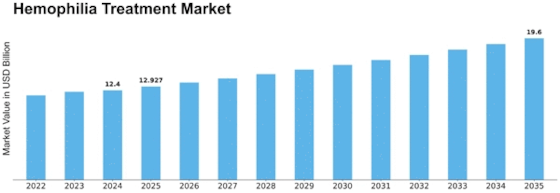

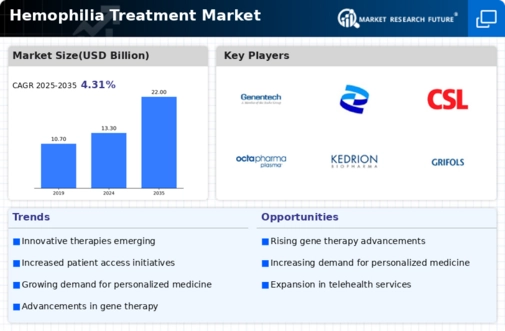
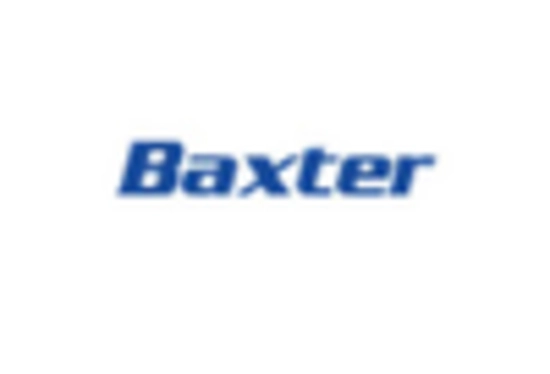
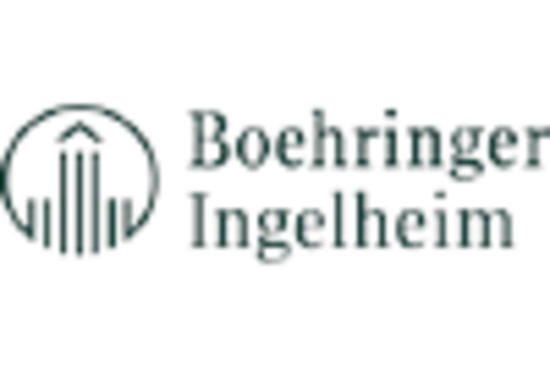
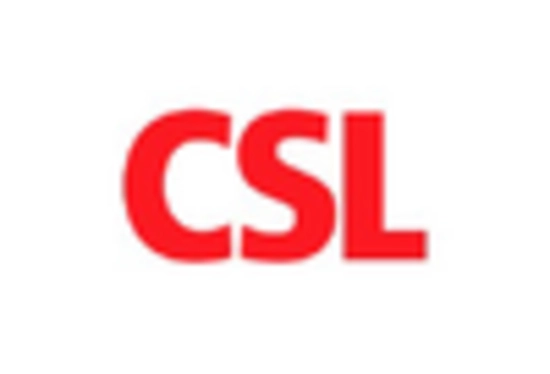
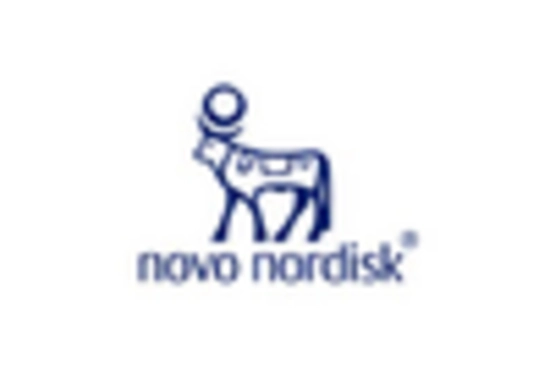
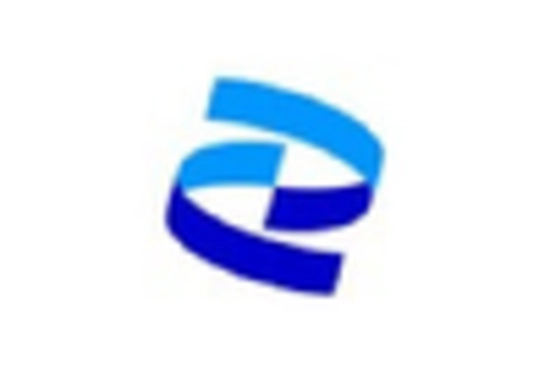
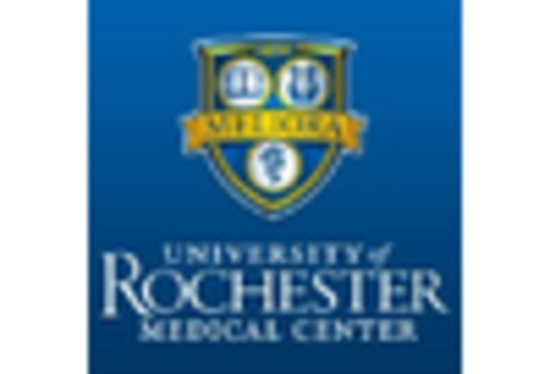









Leave a Comment